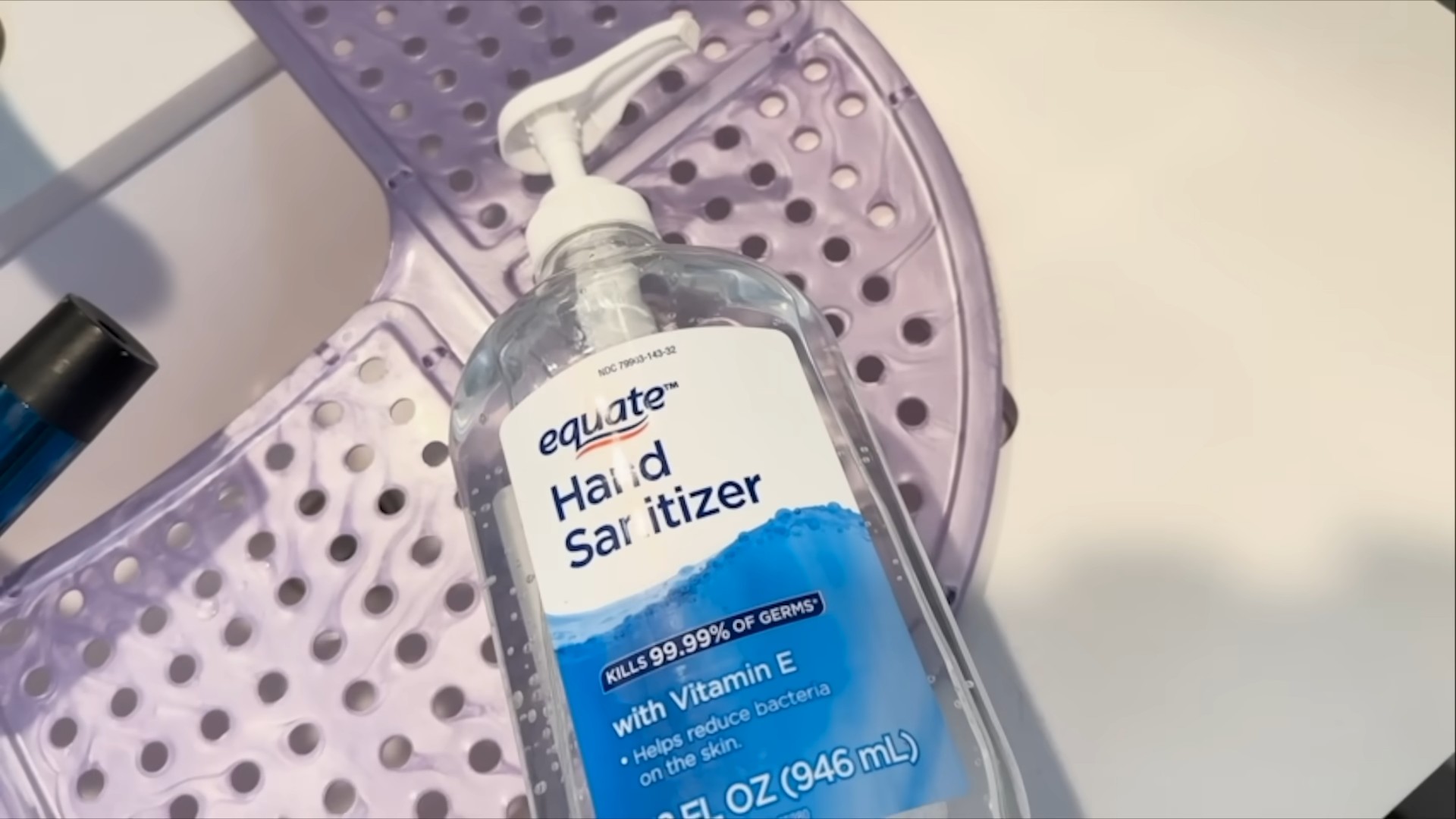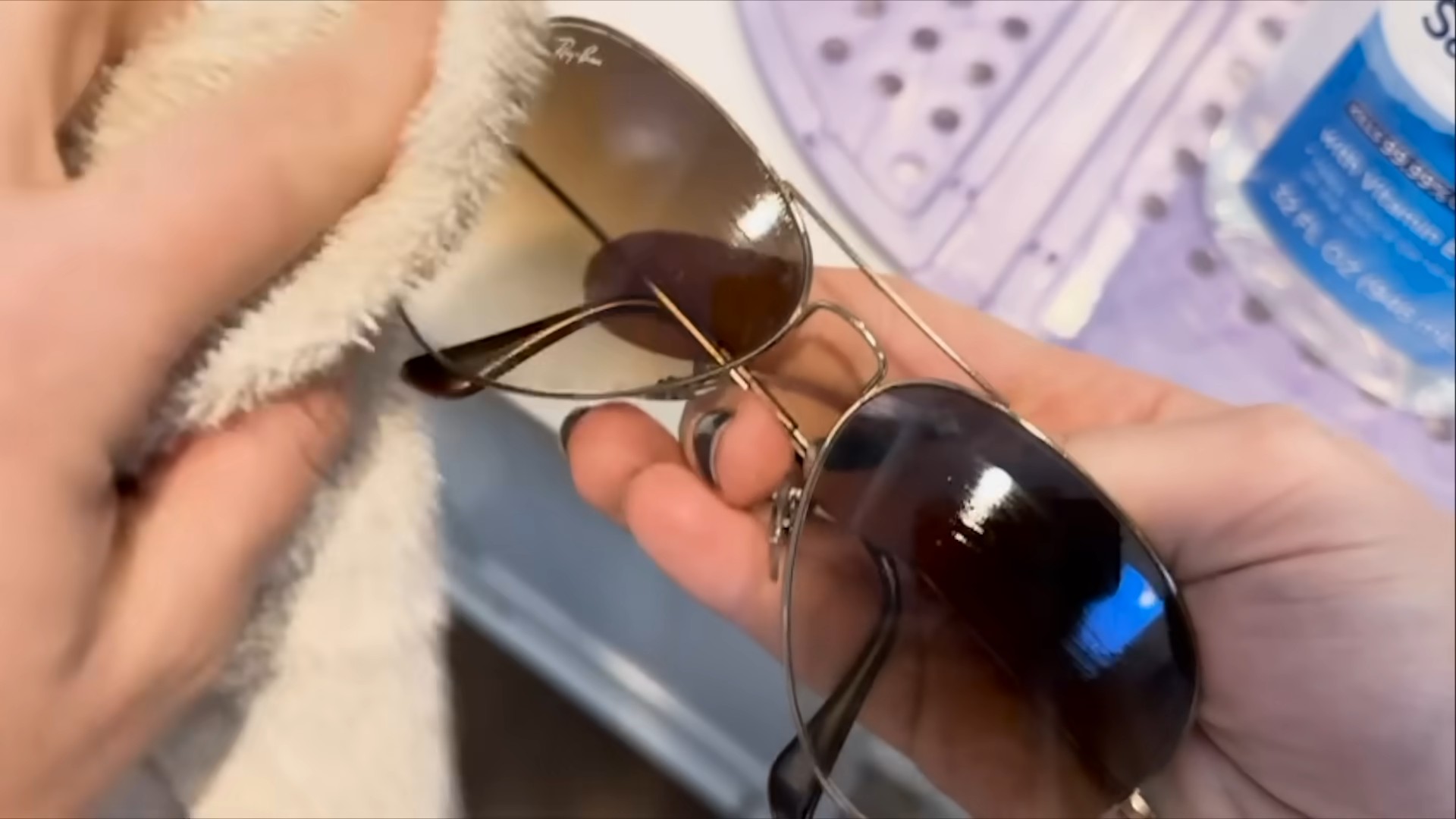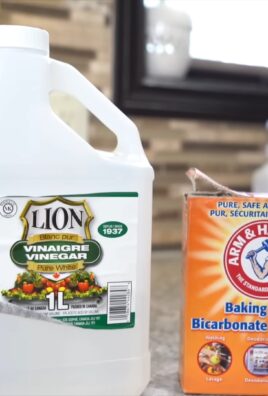Hand Sanitizer Unexpected Uses: We all know hand sanitizer as our trusty sidekick for keeping germs at bay, especially these past few years. But what if I told you that little bottle of antiseptic gel holds a treasure trove of surprising superpowers beyond just clean hands? You might be surprised to learn that the history of hand sanitizers, while relatively recent, reflects our ongoing quest for hygiene and health, evolving from simple alcohol solutions to the sophisticated formulas we use today.
Forget those stubborn permanent marker stains, that sticky residue from price tags, or even a foggy car windshield! This DIY article is about to unlock a world of clever hacks that will make you see hand sanitizer in a whole new light.
Let’s face it, life gets messy. And sometimes, the usual cleaning products just don’t cut it. That’s where these hand sanitizer unexpected uses come in. I’m going to show you how to tackle everyday problems with this readily available and affordable solution. From shining your shoes to removing ink stains, prepare to be amazed by the versatility of this germ-fighting hero. So, ditch the frustration and get ready to discover the amazing potential hiding in that bottle of hand sanitizer!

Hand Sanitizer: More Than Just Clean Hands!
Hey there, fellow DIY enthusiasts! We all know hand sanitizer is a must-have for keeping germs at bay, especially these days. But did you know this little bottle of alcohol-based goodness has a ton of unexpected uses around the house? I’m here to share some of my favorite hand sanitizer hacks that will make your life a little easier (and maybe even a little cleaner!). Get ready to be amazed!
Cleaning and Stain Removal Powerhouse
Hand sanitizer’s high alcohol content makes it a surprisingly effective cleaning agent. Just remember to test it on an inconspicuous area first, especially on delicate surfaces.
Removing Permanent Marker
Oh no! Did your little one (or maybe even you!) accidentally decorate your furniture with a permanent marker masterpiece? Don’t panic! Hand sanitizer to the rescue!
Step-by-step instructions:
1. Apply Generously: Squirt a generous amount of hand sanitizer directly onto the permanent marker stain. Make sure the entire area is covered.
2. Let it Sit: Allow the hand sanitizer to sit for about 1-2 minutes. This gives the alcohol time to break down the ink.
3. Wipe Away: Using a clean cloth or paper towel, gently wipe away the hand sanitizer. You should see the marker lifting off the surface.
4. Repeat if Necessary: For stubborn stains, you may need to repeat the process.
5. Clean with Soap and Water: Once the marker is gone, clean the area with soap and water to remove any residue from the hand sanitizer.
I’ve used this trick on everything from desks to whiteboards, and it works like a charm!
Cleaning Sticky Residue
We’ve all been there – removing a sticker or label only to be left with that annoying, sticky residue. Hand sanitizer can help!
Step-by-step instructions:
1. Apply to Residue: Apply a small amount of hand sanitizer directly to the sticky residue.
2. Let it Soak: Let it sit for about 30 seconds to a minute. This will soften the adhesive.
3. Scrub Gently: Using a clean cloth or sponge, gently scrub the residue. You should see it start to ball up and come off.
4. Wipe Clean: Wipe the area clean with a damp cloth.
This works great for removing residue from jars, furniture, and even clothing (again, test in an inconspicuous area first!).
Shining Chrome Fixtures
Want to give your chrome fixtures a quick shine? Hand sanitizer can do that!
Step-by-step instructions:
1. Apply a Small Amount: Put a small dab of hand sanitizer on a clean, soft cloth.
2. Wipe the Fixture: Wipe the chrome fixture with the cloth, applying gentle pressure.
3. Buff to a Shine: Use a clean, dry cloth to buff the fixture to a sparkling shine.
This is a super quick and easy way to keep your faucets and showerheads looking their best.
Cleaning Eyeglasses
Smudged eyeglasses driving you crazy? Hand sanitizer can help with that too!
Step-by-step instructions:
1. Apply a Tiny Amount: Put a very small drop of hand sanitizer on each lens.
2. Spread it Around: Gently spread the sanitizer around the entire lens surface.
3. Wipe Clean: Use a clean, soft microfiber cloth to wipe the lenses clean.
Important Note: Make sure your hand sanitizer doesn’t contain any added moisturizers or fragrances, as these can leave a film on your lenses.
Beauty and Personal Care Hacks
Believe it or not, hand sanitizer can also be used for a few beauty and personal care tricks!
Emergency Deodorant
Forgot your deodorant? Don’t sweat it (literally!). Hand sanitizer can act as a temporary substitute.
Step-by-step instructions:
1. Apply a Small Amount: Apply a small amount of hand sanitizer to your underarms.
2. Let it Dry: Allow it to dry completely before getting dressed.
The alcohol in the hand sanitizer will kill odor-causing bacteria. This is a great quick fix, but I wouldn’t recommend relying on it long-term, as it can be drying to the skin.
Treating Pimples
Got a pesky pimple popping up? Hand sanitizer can help dry it out.
Step-by-step instructions:
1. Apply a Tiny Amount: Dab a tiny amount of hand sanitizer directly onto the pimple.
2. Let it Dry: Allow it to dry completely.
The alcohol will help to kill bacteria and reduce inflammation. Again, use this sparingly, as it can be drying.
Removing Nail Polish
Out of nail polish remover? Hand sanitizer can work in a pinch!
Step-by-step instructions:
1. Apply to Cotton Ball: Soak a cotton ball with hand sanitizer.
2. Hold on Nail: Press the cotton ball firmly onto your nail and hold it there for a few seconds.
3. Wipe Away: Wipe the nail polish off your nail. You may need to repeat this process several times.
This method might take a little longer than traditional nail polish remover, but it can be a lifesaver when you’re in a bind.
Household Helpers
Beyond cleaning and beauty, hand sanitizer can also be surprisingly useful for a few other household tasks.
Freshening Up Shoes
Smelly shoes? Hand sanitizer can help!
Step-by-step instructions:
1. Spray Inside Shoes: Lightly spray the inside of your shoes with hand sanitizer.
2. Let Them Air Dry: Allow the shoes to air dry completely.
The alcohol will kill odor-causing bacteria, leaving your shoes smelling fresher.
Defrosting a Frozen Lock
Struggling to unlock a frozen car door or padlock? Hand sanitizer can help melt the ice.
Step-by-step instructions:
1. Apply to Key and Lock: Squirt a generous amount of hand sanitizer onto your key and into the lock.
2. Insert and Wiggle: Insert the key into the lock and wiggle it gently.
3. Repeat if Necessary: You may need to repeat this process a few times to fully melt the ice.
The alcohol in the hand sanitizer will lower the freezing point of the water, helping to melt the ice.
Removing Static Cling
Dealing with static cling? Hand sanitizer can help tame those flyaways.
Step-by-step instructions:
1. Apply to Hands: Put a small amount of hand sanitizer on your hands.
2. Smooth Over Hair or Clothing: Lightly smooth your hands over your hair or clothing to reduce static cling.
Just be careful not to use too much, as it can make your hair or clothing feel sticky.
Cleaning Your Phone Screen
Our phones are germ magnets! Hand sanitizer can help keep them clean.
Step-by-step instructions:
1. Apply to Cloth: Put a small amount of hand sanitizer on a clean, soft microfiber cloth.
2. Wipe Screen: Gently wipe your phone screen with the cloth.
3. Dry with Clean Cloth: Use a clean, dry microfiber cloth to dry the screen.
Important Note: Avoid getting hand sanitizer into any ports or openings on your phone.
Safety First!
While hand sanitizer is a versatile tool, it’s important to remember a few safety precautions:
* Keep out of reach of children: Hand sanitizer is flammable and can be harmful if swallowed.
* Avoid contact with eyes: If hand sanitizer gets in your eyes, rinse immediately with water.
* Don’t use on broken skin: Hand sanitizer can irritate broken skin.
* Test on an inconspicuous area first: Before using hand sanitizer on any surface, test it on a small, hidden area to make sure it doesn’t cause any damage or discoloration.
* Flammable: Remember that hand sanitizer is flammable. Keep it away from open flames and heat sources.
So there you have it! A whole bunch of unexpected uses for hand sanitizer. I hope you found these tips helpful. Now go forth and conquer those stains, sticky messes, and more with your trusty bottle of hand sanitizer! Happy DIY-ing!

Conclusion
So, there you have it! Beyond just keeping your hands clean, hand sanitizer proves to be a surprisingly versatile tool around the house and on the go. From removing stubborn stains to rescuing your makeup, these unexpected uses of hand sanitizer can truly simplify your life and save you time and money. It’s a must-try because it leverages something you likely already have on hand (pun intended!) to tackle everyday problems.
Why is this DIY trick a must-try? Because it’s efficient, cost-effective, and readily accessible. Instead of reaching for specialized cleaning products or expensive solutions, you can often achieve the same results with a simple squirt of hand sanitizer. Think of the space you’ll save in your cleaning cabinet! Plus, it’s a fantastic way to repurpose that bottle of hand sanitizer you might have stocked up on.
Looking for variations? Consider the type of hand sanitizer you’re using. Gel-based sanitizers work best for stain removal and cleaning surfaces, while liquid sanitizers might be more suitable for sanitizing smaller items like your phone screen or keys. For delicate fabrics, test a small, inconspicuous area first to ensure the sanitizer doesn’t cause discoloration. You can also experiment with adding a drop or two of essential oil to your hand sanitizer for a more pleasant scent when using it for cleaning purposes. Lavender, lemon, or tea tree oil are all great options.
We encourage you to try these unexpected uses of hand sanitizer and discover the convenience for yourself. Don’t just take our word for it – put these tips to the test and see how hand sanitizer can become your new go-to solution for a variety of everyday challenges.
And most importantly, we want to hear about your experiences! Did you find a new and innovative way to use hand sanitizer? Did one of our tips work particularly well for you? Share your stories, tips, and tricks in the comments below. Let’s build a community of hand sanitizer enthusiasts and unlock even more of its hidden potential! Your feedback is invaluable and helps us all learn and discover new ways to make our lives a little bit easier. So go ahead, give it a try, and let us know what you think! This simple DIY trick using hand sanitizer could be a game changer.
Frequently Asked Questions (FAQs)
Is it safe to use hand sanitizer on all surfaces?
While hand sanitizer is generally safe for most surfaces, it’s always a good idea to test it in an inconspicuous area first, especially on delicate materials like leather or painted surfaces. Some hand sanitizers contain ingredients that could potentially cause discoloration or damage. Avoid using hand sanitizer on surfaces that are sensitive to alcohol, such as certain types of plastics or electronics. When in doubt, consult the manufacturer’s instructions for the surface you’re cleaning.
Can I use hand sanitizer to remove permanent marker stains?
Hand sanitizer can be effective in removing permanent marker stains from certain surfaces, such as whiteboards, hard surfaces, and even some fabrics. However, the success rate depends on the type of marker, the surface it’s on, and how long the stain has been there. For best results, apply hand sanitizer directly to the stain, let it sit for a few seconds, and then wipe it away with a clean cloth. You may need to repeat the process several times. For fabrics, blot the stain gently instead of rubbing to avoid spreading it. If the stain persists, you may need to try a specialized stain remover.
Will hand sanitizer damage my phone screen?
While hand sanitizer can be used to clean your phone screen, it’s important to use it sparingly and carefully. Avoid spraying hand sanitizer directly onto the screen, as this could potentially damage the internal components. Instead, apply a small amount of hand sanitizer to a soft, lint-free cloth and gently wipe the screen. Be sure to avoid getting any liquid into the ports or openings of your phone. Alternatively, you can use screen-cleaning wipes specifically designed for electronic devices.
Can I use hand sanitizer to remove sticky residue from labels or tape?
Yes, hand sanitizer can be an effective way to remove sticky residue from labels or tape. The alcohol in the hand sanitizer helps to dissolve the adhesive, making it easier to wipe away. Simply apply a generous amount of hand sanitizer to the sticky residue, let it sit for a few minutes, and then wipe it away with a clean cloth or paper towel. You may need to repeat the process for stubborn residue.
Is it safe to use hand sanitizer on my skin for purposes other than sanitizing?
While hand sanitizer is primarily designed for sanitizing hands, it can be used for other purposes on the skin in a pinch. For example, it can be used to remove makeup smudges or clean minor cuts and scrapes. However, it’s important to use it sparingly and avoid using it on large areas of skin, as it can be drying and irritating. If you have sensitive skin, it’s best to avoid using hand sanitizer altogether and opt for gentler alternatives.
What type of hand sanitizer works best for these unexpected uses?
Gel-based hand sanitizers tend to work best for most of the unexpected uses mentioned, such as stain removal and cleaning surfaces. The gel consistency allows the sanitizer to stay in place and penetrate the stain or residue more effectively. Liquid hand sanitizers can also be used, but they may not be as effective for certain tasks. Regardless of the type of hand sanitizer you use, make sure it contains at least 60% alcohol for optimal results.
Can I use hand sanitizer to clean my eyeglasses?
Yes, you can use hand sanitizer to clean your eyeglasses, but it’s important to do so carefully. Avoid using hand sanitizer that contains fragrances or moisturizers, as these can leave a film on your lenses. Instead, opt for a plain, alcohol-based hand sanitizer. Apply a small amount of hand sanitizer to a soft, lint-free cloth and gently wipe your lenses. Be sure to avoid getting any liquid into the frame or hinges of your glasses.
Does hand sanitizer expire?
Yes, hand sanitizer does expire. Most hand sanitizers have an expiration date printed on the bottle. After the expiration date, the alcohol content may decrease, making the sanitizer less effective at killing germs. While expired hand sanitizer may still be somewhat effective, it’s best to use hand sanitizer that is within its expiration date for optimal results.
Can I make my own hand sanitizer?
Yes, you can make your own hand sanitizer at home, but it’s important to follow a reliable recipe and use the correct ingredients to ensure its effectiveness. The CDC recommends using a hand sanitizer that contains at least 60% alcohol. A simple recipe involves mixing isopropyl alcohol (99%) or ethanol (96%) with aloe vera gel in a ratio of 2:1. You can also add a few drops of essential oil for fragrance. Be sure to store your homemade hand sanitizer in a clean, airtight container.
What are the potential risks of using hand sanitizer excessively?
While hand sanitizer is a convenient way to kill germs, using it excessively can have some potential risks. Overuse of hand sanitizer can dry out your skin, leading to irritation and cracking. It can also disrupt the natural balance of bacteria on your skin, potentially making you more susceptible to infections. Additionally, some studies have suggested that excessive use of hand sanitizer may contribute to antibiotic resistance. Therefore, it’s important to use hand sanitizer responsibly and only when necessary. Washing your hands with soap and water is still the most effective way to kill germs.




Leave a Comment